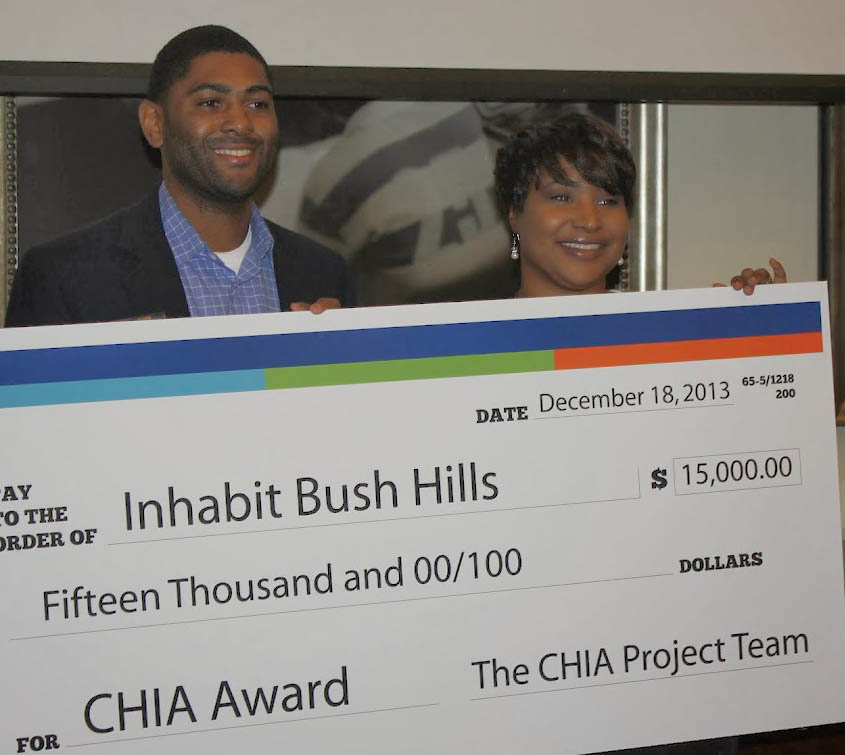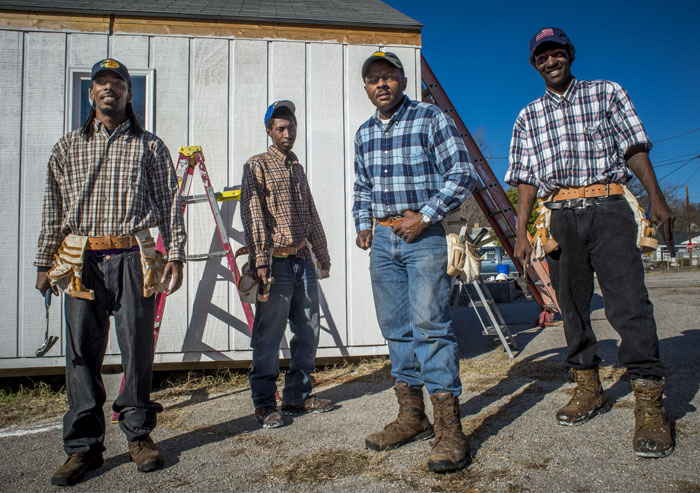Community Driven Innovation Gets a Boost
April 9, 2015by Javacia Harris Bowser - Photos by Steve Wood

So Hood and his wife are doing something about it. They developed NHabit Bush Hills, a grassroots initiative to gather and disseminate information to ensure that neighborhood properties are occupied and properly maintained. “We want to be the central information hub for Bush Hills,” Hood says. “A lot of information about the neighborhood is out there, but nobody has put it together to tell a complete story. “
Hood and his wife were able to launch NHabit Bush Hills thanks to the Community Health Innovation Awards (CHIA), an annual grant competition from the UAB Center for Clinical and Translational Sciences (CCTS). Administered by the CCTS One Great Community council, the awards encourage local organizations to develop clever, creative solutions to public-health challenges in Birmingham-area neighborhoods.
With a $15,000 CHIA grant, Hood and his wife developed a database of abandoned Bush Hills homes. Then they notified property owners, hoping to learn how the city and local organizations could help resolve any issues with the vacant houses. “CHIA has raised the profile of what we’re doing,” says Hood, an assistant professor in UAB’s Collat School of Business. “People know about us, and we’ve built a lot of relationships.”
 David VanWilliams (second from right) teaches job skills to Inglenook’s young adults, including (left to right) Ronny Thompson, Johnathan Woods, and Floyd O'Nea
David VanWilliams (second from right) teaches job skills to Inglenook’s young adults, including (left to right) Ronny Thompson, Johnathan Woods, and Floyd O'Nea
Taking a Chance:
The seven newest CHIA winners were chosen last fall by a panel of five judges representing business, health care, public health, education, and nonprofit and private sectors. Some of their smart solutions include using art, gardens, light, and sound to create a safer Ensley; transforming a soup kitchen into a healthy food café to train junior chef interns; and promoting walking for transportation and fitness via smartphone apps and social media. Several UAB schools and centers contributed a total of $76,500 for grants.
Started in 2012, CHIA is no ordinary grant-making process, says Shauntice Allen, Ph.D., CCTS program manager for One Great Community. Applicants are matched with mentors and attend workshops to help them brainstorm unique ways to tackle community issues. Applicants also have the opportunity to make their case not only on paper, but through an oral presentation as well.
But what truly separates CHIA from other grant programs is its willingness to take chances, Allen says. “From a funding perspective, some of these organizations may be viewed as high risk, meaning they’ve never done this before,” Allen explains. “They may not even be well organized as an entity, but the idea is interesting, it’s something that is innovative, and it could really make a difference.”
Constructing a Brighter Future:
For years David VanWilliams, a master carpenter in Birmingham, had dreams of starting a program that would teach carpentry to young adults in Birmingham. With a $25,000 grant from CHIA, he was able to launch the Community Carpentry Project in the Inglenook neighborhood in March 2014. The inaugural class of 12 students, ages 18 to 25, completed the program with enough knowledge and training to be qualified for a job as a carpenter’s helper or to pursue advanced carpentry education.
“We have a lot of young people who, because they can’t get jobs, get frustrated and get involved in crime and violence, and this doesn’t have to be,” VanWilliams says. With his program’s training, young adults can now take advantage of “jobs that are happening all around them, whether it’s a restaurant, bridge, or high-rise building being built or a house being remodeled in the neighborhood,” he adds.
The carpentry project recently welcomed 12 new students, and VanWilliams also hopes to develop an after-school program for high school students and a Saturday program for students ages 10 to 13. “We would not have been able to implement this,” VanWilliams says, “had it not been for CHIA supporting our project.”
This article can also be found in UAB Magazine.